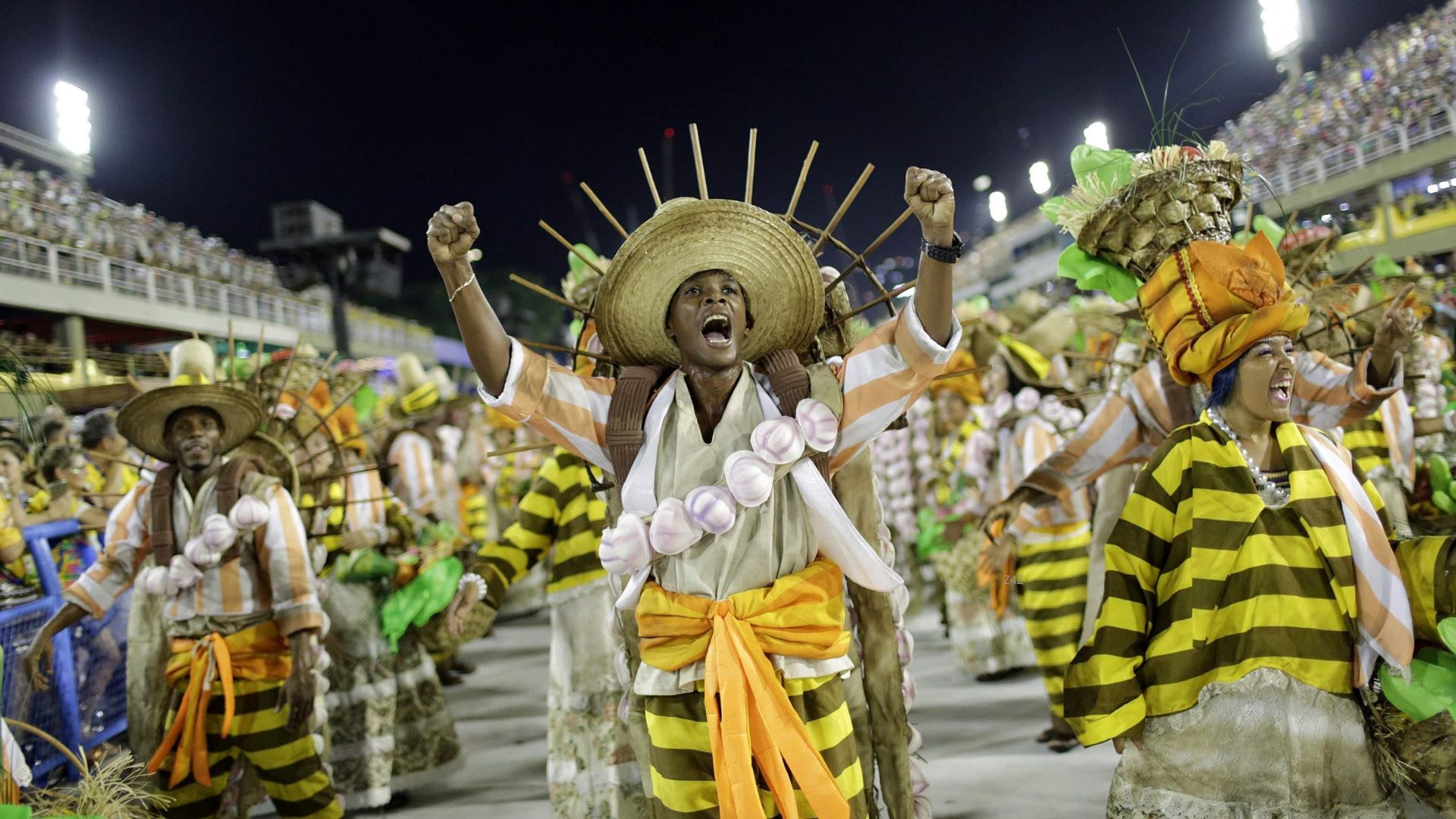- Your cart is empty
- Continue Shopping

Carioca Carnival Samba School Parade Categories
The Rio Carnival It is recognized for its great samba school parades, grandiose events that involve thousands of participants and delight crowds around the world. The central role of samba schools in this festival goes beyond mere presentation; They are the true protagonists, responsible for bringing to the public an explosion of colors, rhythms and narratives that reflect the rich Brazilian culture.

The Central Role of Samba Schools
Samba schools are groups that prepare all year round for the culminating moment of Carnival: the parade at Marquês de Sapucaí. They play a crucial role in preserving and promoting Brazilian culture, incorporating historical, social and artistic elements into their parades. Each school is a true community, involving members of different ages, social classes and abilities, all united by their love of samba and the carnival tradition.
Parade Categories and the Hierarchy of Carnival in Rio
1. Special Group: The Carnival Elite
The Special Group is the most prestigious and anticipated category of Rio Carnival. Composed of 12 samba schools considered the best in Rio, the Grupo Especial parade is a display of grandeur, creativity and fierce competition. Each school has around 80 minutes to present a show that will be evaluated on several criteria, including samba-plot, allegories, costumes, harmony and evolution.
2. Access Group: The Quest for Ascension
The competition for the title of Special Group champion is not the only focus of samba schools. The Access Group represents the second division of Carnival, and the schools that make up this category seek to move up to the Special Group the following year. These associations have the opportunity to showcase their talent and earn a place among the main schools in Rio de Janeiro.
3. Junior School Parades: The Future in Highlight
The Junior Schools Parades are a celebration of the future of Carnival. Made up of children and teenagers, these schools present their own parades, showing that the passion for Carnival is passed down from generation to generation. These events provide an enchanting and promising glimpse of what is to come in the world of samba schools.
Distinctive Features of the Parades
1. Samba-Plot and Annual Theme
Each samba school chooses an annual theme that will serve as inspiration for their parade. This theme, known as samba-enredo, is the guiding thread of the presentation, guiding the creation of costumes, allegories and choreography. The ability to tell a cohesive and engaging story through samba is fundamental to the success of a school during Carnival.
2. Allegories and Monumental Props
Samba schools are known for their imposing floats and spectacular props. Giant structures and sculptures, often motorized, are an integral part of the parades. These visual elements not only impress the audience, but are also evaluated by the judges, contributing to each school's final score.
3. Dazzling Costumes and Precise Choreography
The costumes worn by samba school members are true works of art. They reflect the samba theme and are elaborated with exuberant details. Furthermore, the choreographies are carefully rehearsed to ensure a fluid and harmonious presentation, contributing to the contagious energy of the parade.
The samba school parade is the highlight of Rio de Janeiro Carnival, a celebration that transcends mere competition and becomes a living expression of Brazilian cultural identity. The different categories of parades, such as the prestigious Special Group and the aspiring Access Group, contribute to the diversity and dynamism of this artistic manifestation. With their magnificent allegories, dazzling costumes and the contagious energy of samba, samba schools play a vital role in the maintenance and evolution of Carnival in Rio, consolidating it as one of the most spectacular and unique events in the world.

